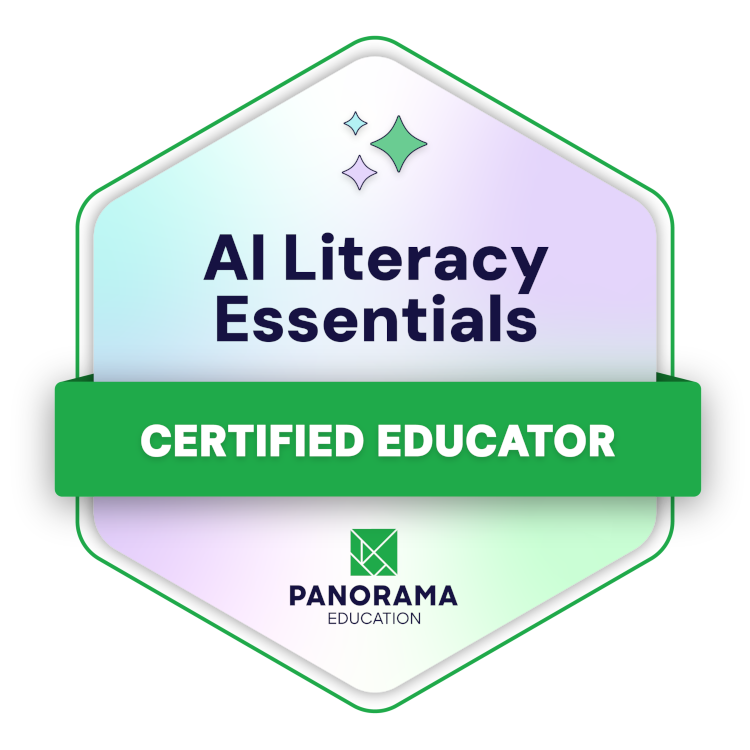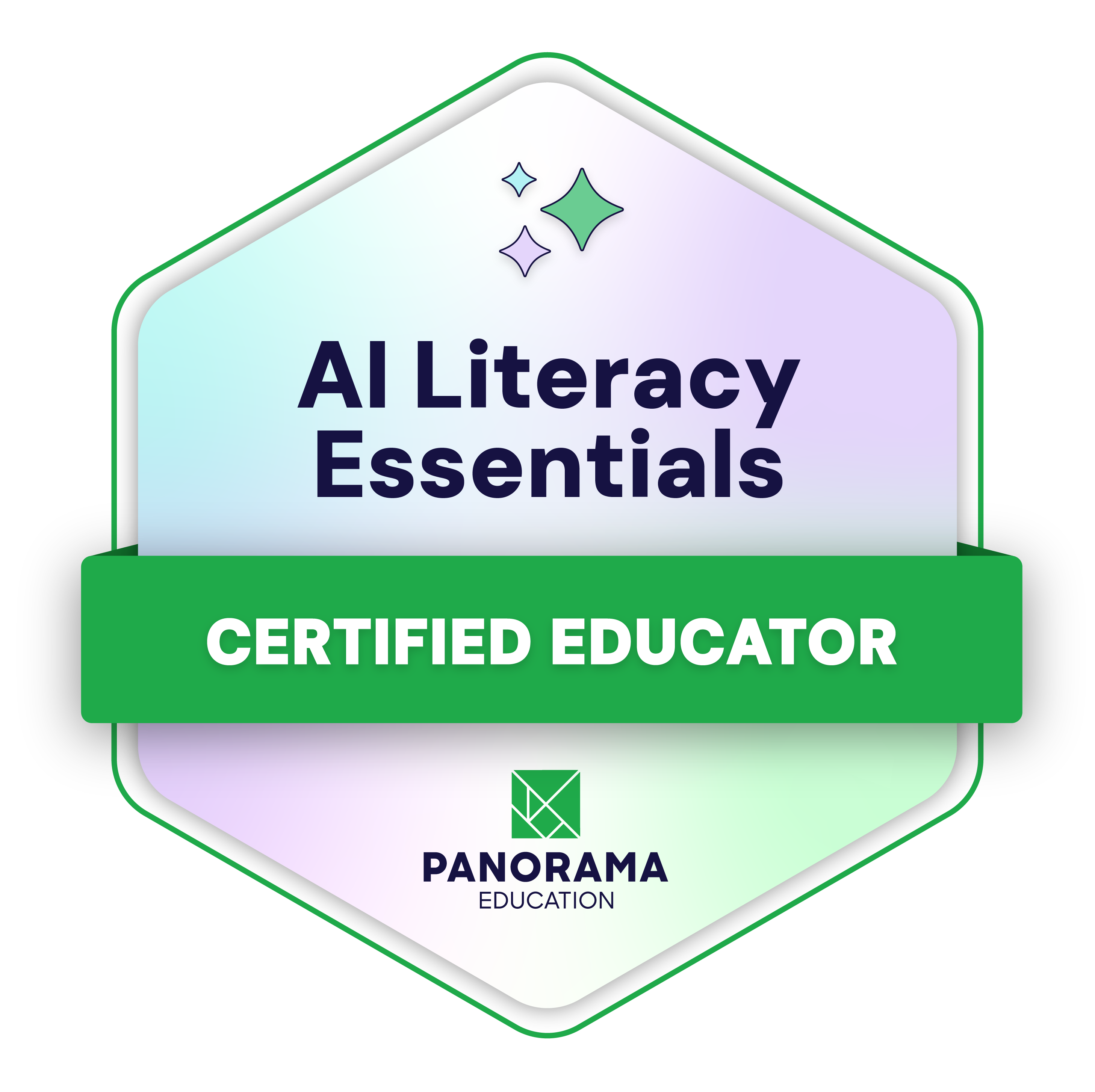Back-to-school planning is more than supply lists and staff schedules—it’s a chance to define what kind of school year you want to lead, and what kind of future you’re preparing students for. What vision do you have for the year ahead, and how can technology, including AI, help get you there?
As AI rapidly reshapes the education landscape, summer offers a window for district leaders to set the tone for thoughtful, secure, and inclusive AI implementation in schools.
Whether you're just beginning to explore AI in K–12 education or already launching tools, district leaders have a responsibility to prepare your team, engage your community, and build AI readiness that lasts into the next school year and beyond.
What Does “AI Readiness” Mean for K–12 Districts?
For school districts, AI readiness goes far beyond purchasing software or piloting chatbots. It’s a culture shift—one that touches leadership, infrastructure, ethics, instruction, and trust.
An AI-ready district is one where leaders speak a common language about AI’s purpose and limits. It’s where professional development prepares educators to use AI with discernment, and where policies reflect a commitment to privacy and long-term sustainability. Just as important, AI readiness means engaging families and communities as partners in navigating this new terrain.
Summer AI Readiness Strategies for District Leaders
1. Lay the Groundwork for Secure AI Implementation
Trusted and secure AI adoption in schools starts with thoughtful planning and evaluation. Many AI tools collect and store user data, which district leaders need to take proactive steps to ensure that student information remains protected, and that AI decisions are transparent and auditable. Now is the time to collaborate with IT, curriculum, and legal teams to meet district-wide compliance and security standards before any rollout.
Key questions to ask:
-
Does the AI vendor comply with key student data privacy laws like FERPA and COPPA?
-
How does the AI vendor protect student and staff data?
-
Has your technology leader evaluated the vendor’s privacy and security agreements and/or terms of service?
-
Are we jumping to enable AI features without first considering their impact on teaching, learning, and data security?
Laying this groundwork now builds a strong foundation for AI to support meaningful, safe, and future-ready learning experiences.
2. Survey Your School Community About AI Perceptions and Readiness
Before rolling out new tools or policies, ask: How does our community feel about AI? Survey teachers, staff, and families about their comfort levels, concerns, and aspirations for AI in K–12 education. A clear understanding of stakeholder perspectives allows leaders to build trust and create AI use policies that meet your community’s unique needs.
Panorama’s AI Perceptions and Readiness Survey can help leaders:
- Benchmark readiness
- Identify areas for communication or PD
- Build trust by showing responsiveness to community voice
3. Create an AI Advisory Committee
No single leader can build an AI roadmap alone. Consider assembling an advisory group that brings together diverse perspectives: tech leads, teachers, counselors, librarians, students, and legal experts. A cross-functional team helps to reflect the full fabric of your school community—an essential step in AI for school leaders looking to develop inclusive, responsive policies.
First and foremost, the AI advisory committee can help shape, review, and adapt your district’s AI approach. But it can also serve as a source of ongoing insight, vetting new tools and adapting new policies as AI continues to evolve.
4. Develop a District-Wide AI Policy
Use insights from your advisory group and community surveys to draft a formal AI policy. A clear, district-level policy signals that AI use will be guided by thoughtful, student-centered principles.
Be sure your AI framework includes:
-
Definitions of acceptable and responsible use
-
Guardrails for generative AI tools
-
Student privacy and data governance standards
-
Guidance on staff use, instructional integration, and future evaluations
Building this policy over the summer allows time for stakeholder input, alignment with existing tech use and digital citizenship frameworks, and communication before the school year begins.
5. Build Practical Guidelines for Daily Use
While a formal policy sets the foundation, staff and families need practical guidance for what responsible AI use looks like day to day. Consider creating documentation that outlines example use cases, common missteps to avoid, and links to resources and professional development.
By making expectations accessible and relatable, districts empower educators and students to explore AI’s possibilities with confidence and care.
6. Launch Summer AI Learning Challenges or Micro-Credentials
Speaking of professional development, spark curiosity and boost confidence with gamified summer learning. Offer optional summer PD for teachers that includes AI learning challenges or micro-credential programs to build AI readiness. Educators could earn badges for completing foundational training, experimenting with new tools, or designing AI-enhanced lesson plans.
Not only will this approach build early momentum for AI, it can also help identify teacher-leaders who are ready to support their peers in the fall.
7. Create AI Labs or Maker Spaces
Summer downtime is ideal for reimagining space. Consider dedicating classrooms or library areas as AI labs, designated spaces for AI experimentation to support both student learning and educator PD.
Equip these innovation spaces with:
-
Laptops or tablets
-
Access to vetted, education-specific AI tools
-
A rotation of self-paced PD modules or AI learning playlists for staff
-
Feedback walls to gather ideas on AI use
-
Low-lift signage or guiding questions to spark curiosity (“How could AI support your learning today?”)
Even a modest space signals that your district is committed to hands-on, future-ready learning—and can be a catalyst for cross-disciplinary projects once the school year begins.
8. Prepare Your Professional Development Roadmap
Summer PD for teachers should include AI fluency as a core competency. Think beyond a single workshop by developing a roadmap that weaves AI into ongoing professional learning, and tailor differentiated learning paths based on teacher readiness and roles.
Leaders should model that learning about AI is not a one-time event, but an evolving practice that will grow with new tools, insights, and pedagogical approaches.
9. Communicate Transparently With Families & Communities
One of the most overlooked aspects of AI readiness in K–12 is clear, proactive communication. Use the summer to prepare messages for families that explain:
-
Your district’s approach to AI
-
Privacy protections in place
-
Ways families can talk with students about AI
Whether you communicate via newsletters, websites, or info sessions, transparency goes a long way toward building community trust.
10. Evaluate AI Tools with a Long-Term Lens
As you evaluate AI tools to bring into your schools, make sure you’re thinking ahead to ensure they align with your district’s goals. Establish evaluation criteria that prioritize student safety, ease of use for educators, and alignment with instructional needs.
Focus on tools designed specifically for K–12, with secure integrations and clear value for the classroom. When AI tools are chosen deliberately, they can enhance—not overwhelm—educator workflows.
Start Now, Start Smart
Remember, this isn’t a one-time fix. Back-to-school planning with AI at the forefront will reap benefits for teachers in the years to come. The good news is that the education leaders who start planning now will be best positioned to lead with integrity and innovation.
This summer, set your district on a path toward thoughtful, community-centered AI integration with Panorama Solara. Designed specifically for K–12 education, Solara empowers districts to integrate AI safely, responsibly, and effectively into their classrooms. With secure data practices, educator-centered tools, and built-in professional development support, Solara helps schools harness the power of AI while staying aligned with their core mission: advancing student success.
Ready to put your AI vision into action this school year?
Download our AI Roadmap for District Leaders



.jpg)
.png?width=3300&height=1100&name=District%20Leader%20%20Broad%20Promo%20Email%20-%20FINAL%20(1).png)


.jpg)
